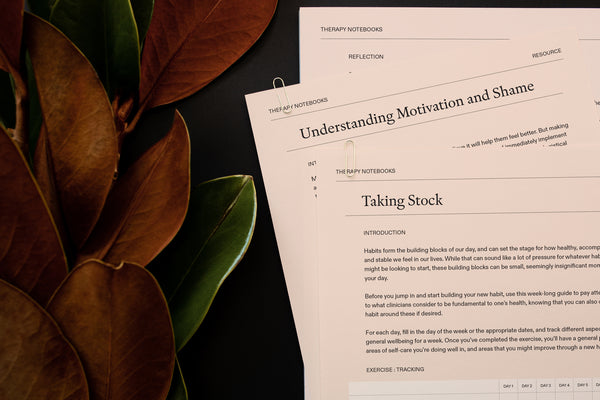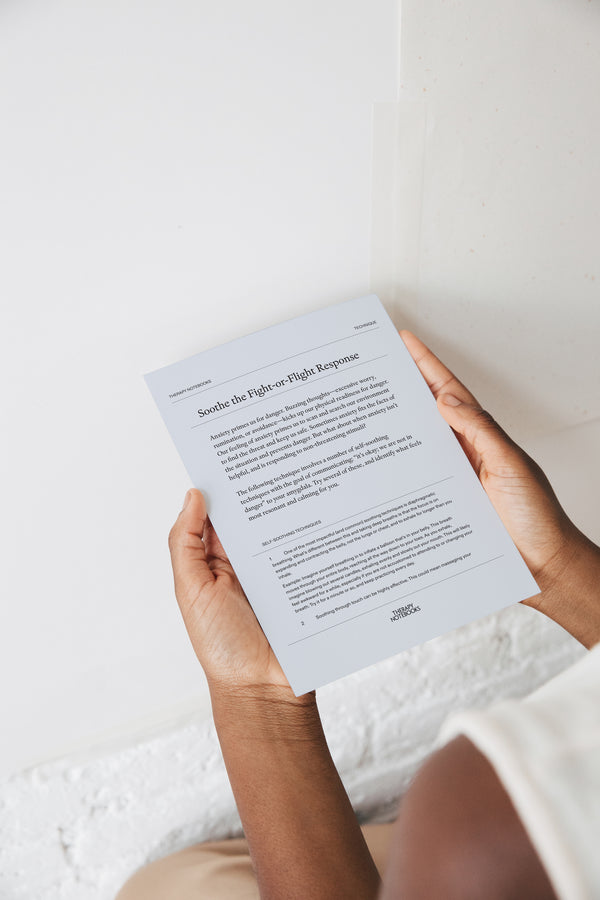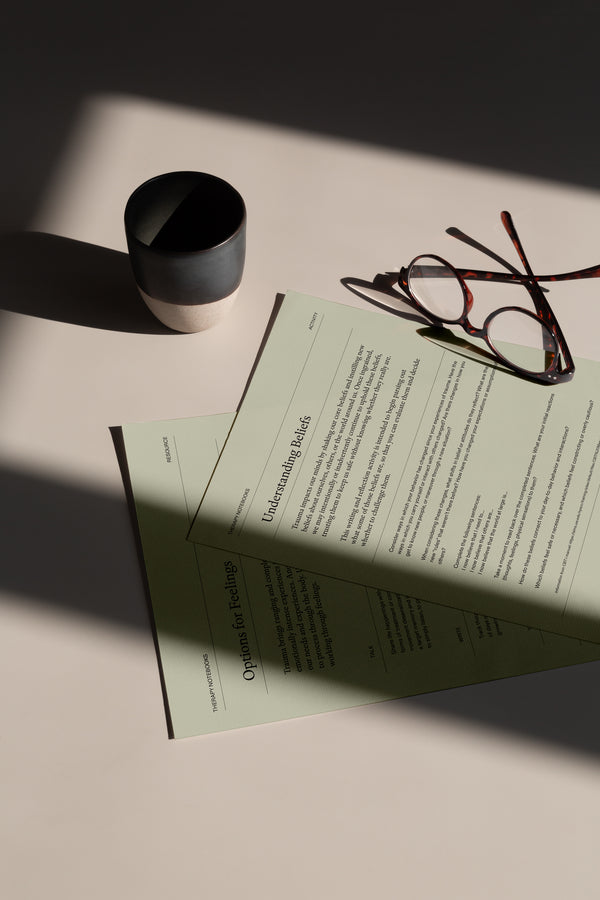The Waiting Room
Expert Tips: Supplemental Resources for The Anti-Anxiety Notebook
By the Therapy Notebooks Team
Supplemental tools and resources to manage anxious thoughts
Expert Tips: Additional Resources for The After-Trauma Notebook
By the Therapy Notebooks Team
Supplemental tools and resources to aid in your trauma recovery process
Expert Tips: Additional Resources for The Anti-Insomnia Notebook
By the Therapy Notebooks Team
Supplemental tools and resources to help you manage the thoughts that keep you up at night
Expert Tips: Supplemental Resources for The Field Guide for Depression
By the Therapy Notebooks Team
Expert Tips: Additional Resources for The Therapy Journal
By the Therapy Notebooks Team
Supplemental tools and resources to help you get more out of therapy





